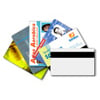Today's Best Tech Deals
Getting Started with Quicken® 2007 for Mac® R efer to this guide for instructions about using Quicken for Mac’s online account services to save time and automatically keep your records up to date. Before you can download your transactions with Quicken, you must have Internet access, your Customer ID, and PIN.
Picked by Macworld's Editors
Top Deals On Great Products
Picked by Techconnect's Editors

In some product groups, there’s an undisputed leader: an 800-pound gorilla that doesn’t plan on relinquishing the top position any time soon. Where personal financial management software on the Macintosh is concerned, Intuit’s Quicken has held that ground for several years now.
Quicken is one of the few programs to generate a new version every year, and at first glance, Quicken Mac 2007 seems almost identical to the previous version ( ) except for the inclusion of the new QuickEntry Dashboard widget. With the widget, you can quickly enter and categorize transactions. Unfortunately, the widget’s function only works outside of Quicken; because the widget accesses Quicken's main database, you must quit the application before using it.
Quicken 2007 does feature some new uses for existing tools. Quick reports and focused mini-reports are easier to create, and bugs from Quicken 2006 seem to have been quashed. Plus, you can now split automated paycheck transactions into more than one account and track 401k accounts alongside other accounts.
On the whole, Quicken 2007 is convenient, intuitive, and powerful enough for the majority of its home- and small-business users. After installation, you can either import data from an earlier version of Quicken (dragging and dropping the data file onto the Quicken icon in the Dock elegantly handles all import and categorization functions) or download a QIF (Quicken Interchange Format) file of your account history from your financial institution and import that file into Quicken.
You can then create budgets and add entries to your transaction history, all the while categorizing your transactions for budget analysis. Once your information is entered, budgeting tools allow you to display data from multiple categories as charts and graphs for visual analysis.
Quicken provides a friendly face to the task of setting up a stock portfolio. You enter data such as stock name, stock quote symbol, purchase date, purchase price, and number of shares owned; then prompt Quicken to actively track and follow your stocks. Similar types of accounts, like mutual funds, CDs, bonds, and 401k accounts can be set up in this way, with the program tracking data and reporting back with customizable histories. Quicken can retrieve and track stock data as far back as five years to determine trends and patterns, making research easy.
Although not entirely new, features such as iCal and .Mac integration make Quicken 2007 more useful. An iCal icon allows you to insert past and future transactions into your iCal calendars, while .Mac backups can be scheduled and customized in order to place a copy of your financial data off-site.
Registration at the Quicken.com Web site, though not technically necessary, serves as the key to a multitude of additional services. With registration, you can access credit reports, stock-trading services, online banking, bill payment services, and credit card statements. Clicking on TurboTax in the icon menu from Quicken, for example, links to Intuit’s TurboTax page, which offers configurations of the software currently on sale. While some services are offered for free or at a discount for Quicken users, there’s an overall effort to lead users to partners’ Web sites.
The Quicken user guide is a searchable PDF document. This 477-page guide is well written, and it proved useful to me. The application also offers shortcuts to Intuit’s product support and customer forums, which is nice to see.
Quicken For Mac Download
Unfortunately, there are some shortcomings to consider. First, Quicken lacks Universal Binary support for Apple’s Intel-based machines. While this won’t necessarily hamper performance, it speaks to Quicken’s track record of being slow to provide significant upgrades for Macintosh users. Quicken also doesn’t offer support for international currencies.
In addition, online banking features may fall short, depending on how much access Quicken can have to your financial institution. Some institutions offer full—or Direct Connect—access, allowing users to synch their Quicken histories with those online via an OFX (Open Financial Exchange) connection initiated by Quicken. Other institutions support a more limited Web Connect setup, whereby users log in to their financial institution and download a Web Connect file with the newest financial transactions. Quicken later accesses the Web Connect file to synchronize transactions. At the lowest level of access, you may have to download QIF files of your financial history, and then import these into the program. Intuit is pondering the retirement of QIF downloads for Windows users, and indicate it may put QIF out to pasture on the Mac too.
Macworld’s buying advice
Shortcomings aside—chief among them the lack of support for Intel Macs—Quicken Mac 2007 provides a financial management package that performs well, lives up to the reputation established with previous versions, and provides detailed reports. The new Dashboard widget makes short work of entering routine transactions, and improved portfolio tracking features offer a good reason to upgrade. However, if a previous version of Quicken is working well for you, then the additional bells and whistles may not be necessary.
Financial Software For Mac
[ Chris Barylick is a technology journalist whose work has appeared in MacAddict , the UPI news wire, and the Washington Post . He is owner of Mac Menders, a Washington, D.C.-based technical consulting firm. ]
You can track a portfolio’s history and view graphs of your investment performance in Quicken Mac 2007.